Online retailers adore product listing ads for their high conversion rates and reasonable CPCs.
Product listing ads (PLAs) that include a product’s picture, price, and promotional information have already shown their efficiency in attracting the attention of shoppers. And their Click-Through Rates, which are almost 50 percent higher than those of Google Ads text ads, prove it.
Whether you have already been using product listing ads to attract shoppers’ attention, or you are considering launching a Google Shopping campaign, analyzing your e-commerce rivals’ strategies will help you win more sales online.
With the Semrush PLA Positions report, you can uncover your competitors’ tactics in Google Shopping.
Unveiling competitors’ PLA secrets
If you’d like to see historical PLA data, click on the date dropdown (3).
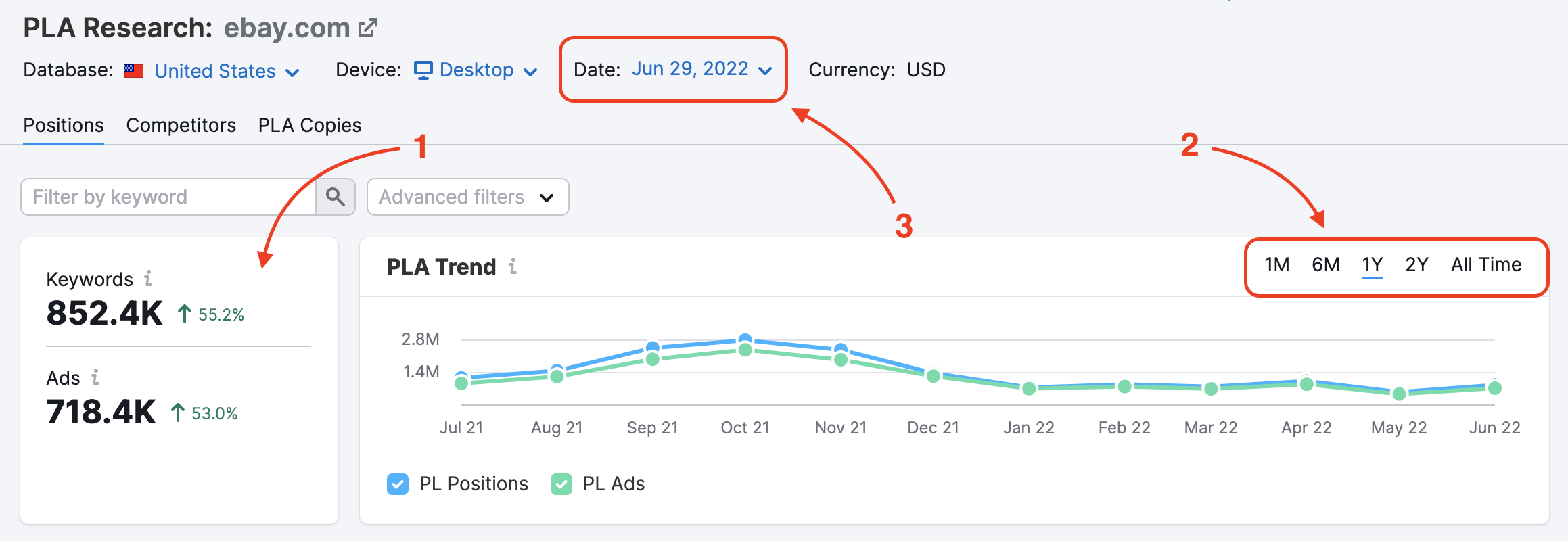
Positions
Positions (4) show you how competitors’ product listing ads are performing in SERPs.
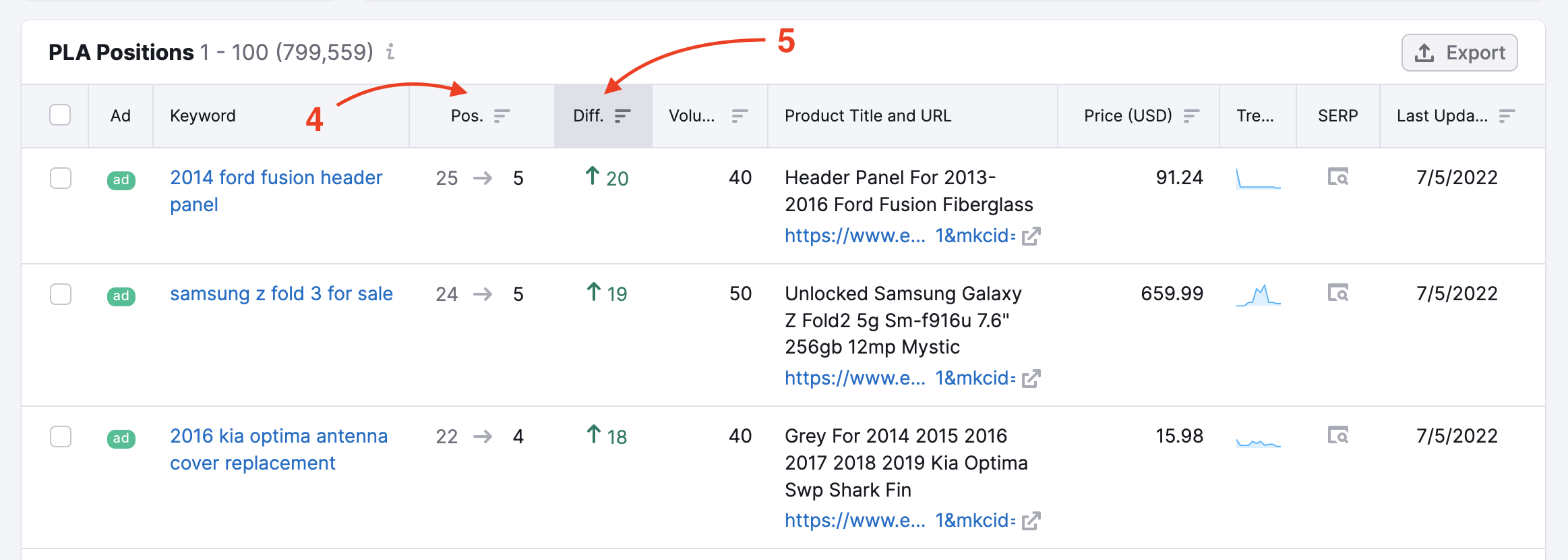
The higher their position, the more relevant ads your competitor has and the better they may be at getting shoppers’ attention. You can also see any changes in the position for the keyword (5).
The report’s other data, such as keywords, title, price, etc., can help you understand why a particular ad is receiving high rankings.
Keywords
PLA keywords (6) are search terms that trigger a domain’s product listing ads to appear in paid search results.
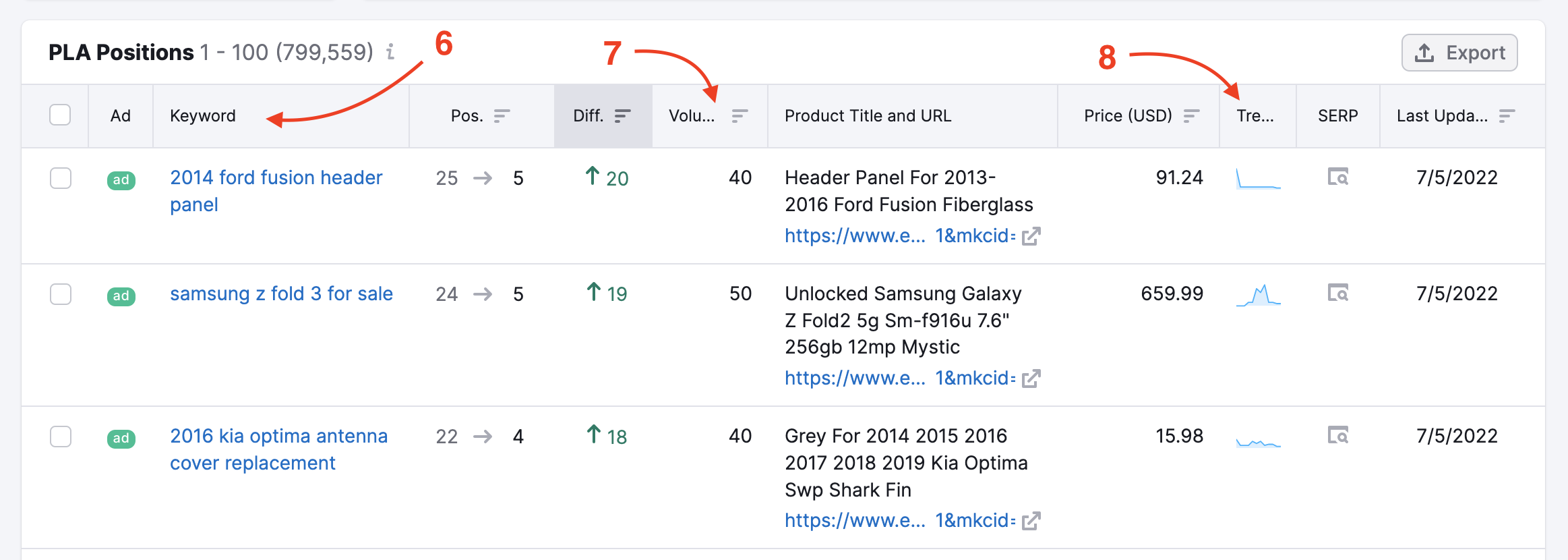
Knowing these keywords can help you find ideas for enriching your product feed content. If you see any terms that you didn’t consider when filling in the product’s title, description or other attributes, then you should definitely incorporate them.
Such metrics as volume (7) and trend (8) will help you understand a keyword’s value. To analyze a particular keyword, click it. You will then be transferred to the Keyword Overview report.
Note: If you see the same keywords in the list, they are not duplicates (see the example below). This might mean that pages with different URLs are ranking for the same keyword, or that the same URL is earning a few positions for the same search term.
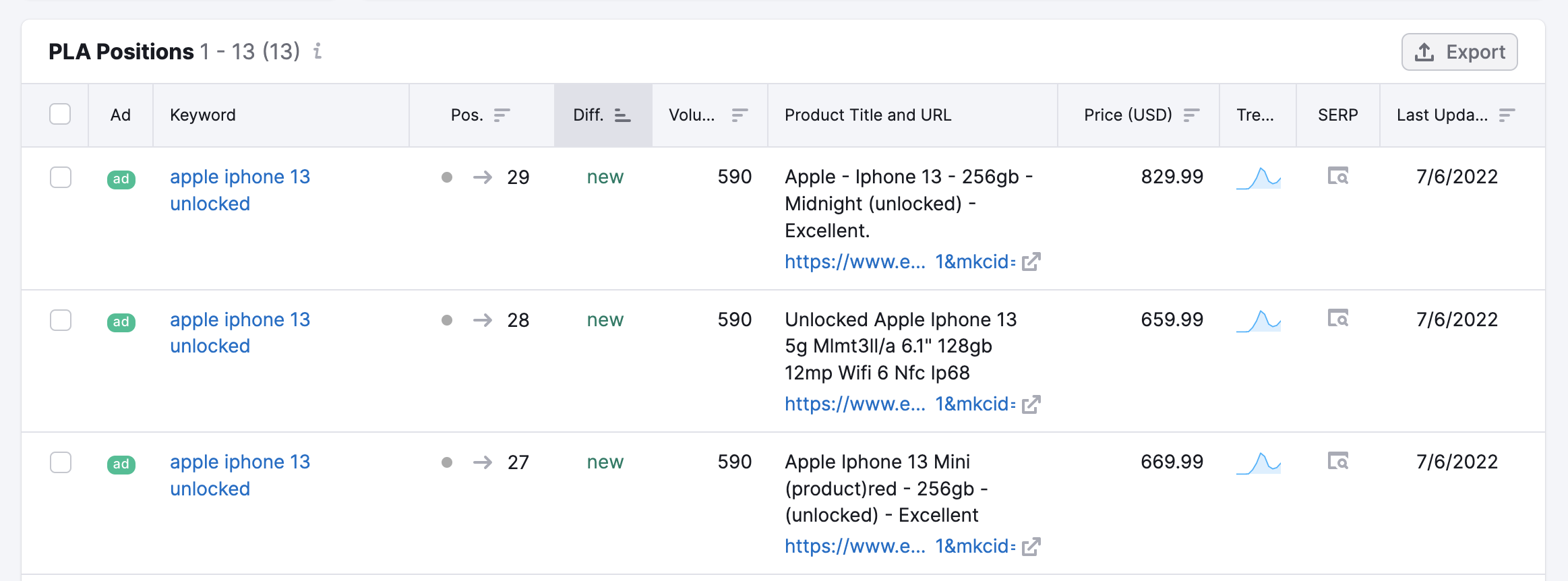
Product Title and URL
Analyzing competitors’ product titles and URLs will help you understand which search queries their products are likely to show up for.
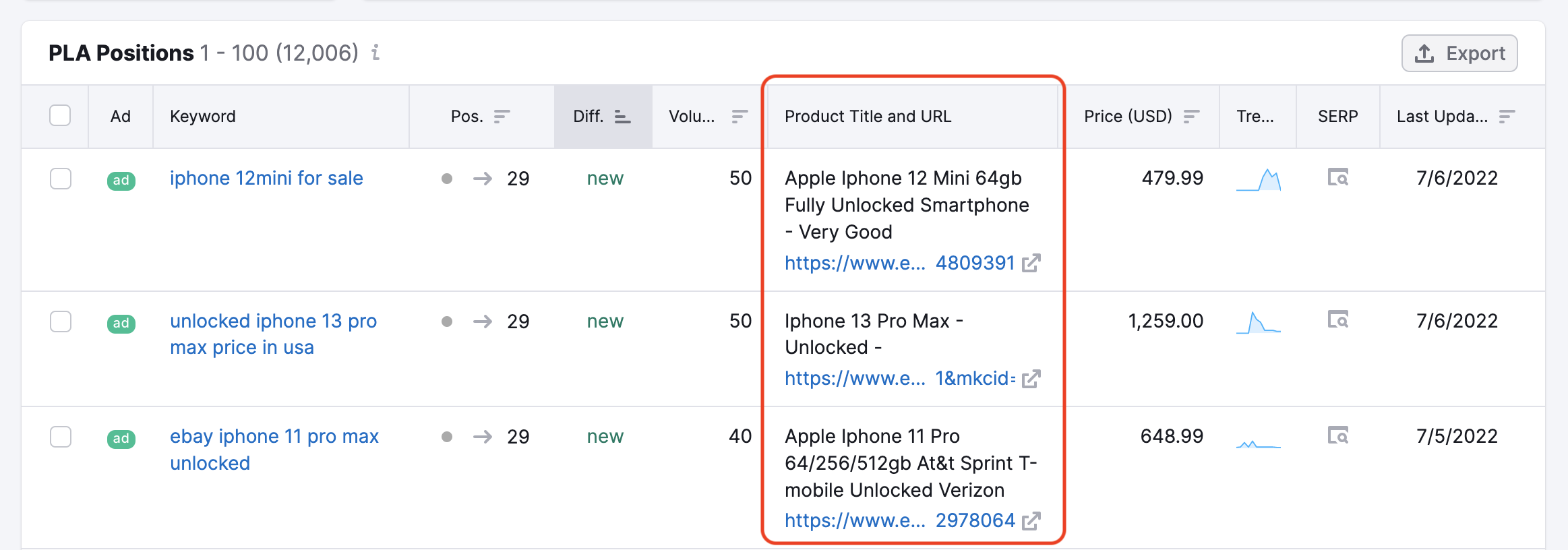
The goal of giving a product a title is not only about describing it, but it’s also about including keywords that potential buyers are searching for.
Underneath each product title, you will also see the URL to that page.
Determine which keywords your competitors are using in their product titles, define if they place their most important search terms toward the front of the title or in the middle, and make sure you appropriately incorporate your target keywords into your titles.
Note: Avoid keyword stuffing in your product titles, and use search terms naturally.
Price
Knowing what prices your e-commerce rivals are asking for products is strategically important. A lower price is one of the most important criteria for online shoppers when choosing between web stores.
If you see that your online competitors are consistently offering better deals, you should immediately adjust your pricing strategy. It will help you not only to win more sales from online shoppers but also to earn more impressions of your product listing ads on Google.
Note: Depending on the regional database, the price will be displayed in dollars for the US, in pounds for the UK, in rubles for Russia, in euros for countries in the European Union, and in other currencies appropriate for the chosen region.
Filtering and sorting PLA results
You can filter results by specific keywords, Position, Volume, URL, Product Title, Product Price, and the Last Update date, as well as sort them in descending or ascending order, which allows you to focus on the results that are most relevant:
- By applying a filter, including or excluding a keyword, you can focus on specific products or brands
- By applying the Product Title filter, you can concentrate on specific products
- Filtering results by position will help you spot the best-performing ads and items
- The Price filter allows you to better understand a competitor’s pricing strategy
Play with filters and sorting to customize your results! You can also export results directly into a CSV, CSV semicolon or Excel file. You can choose to export all of the data or the first 100, 500, 1,000, 3,000 or 10,000.
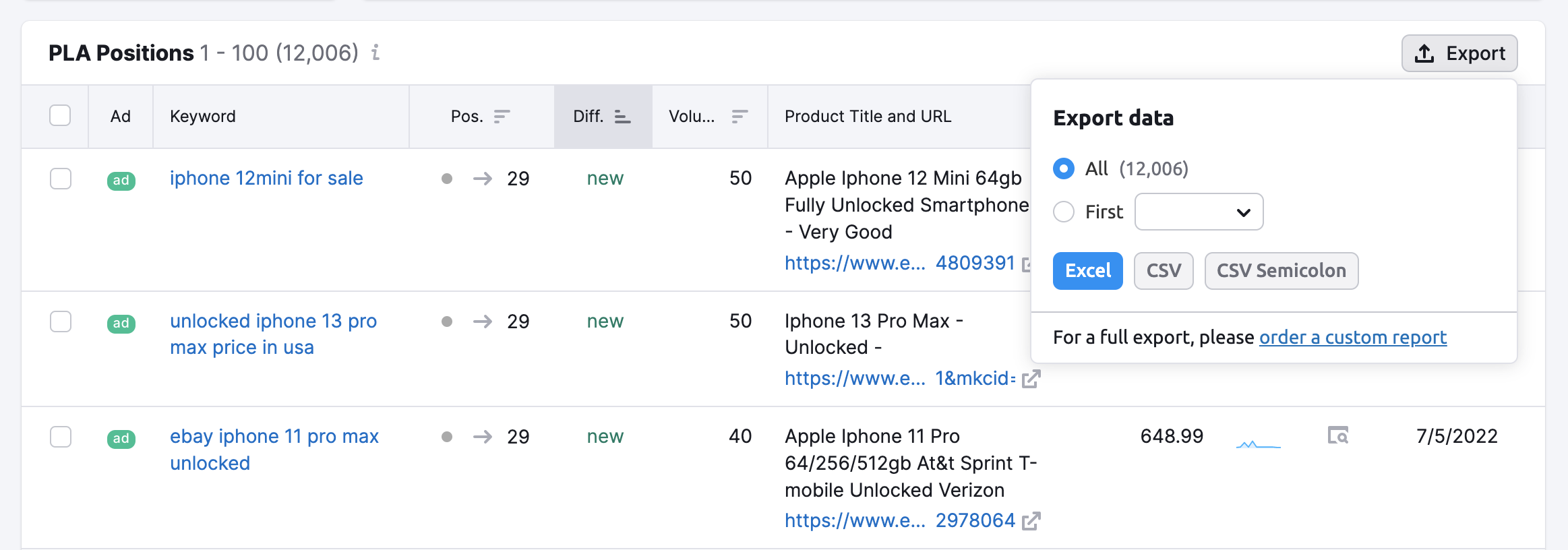
Do you want to take an even closer look at competitors’ product listing ads? Then go to the next section. You’ll learn about the Semrush PLA Copies report.